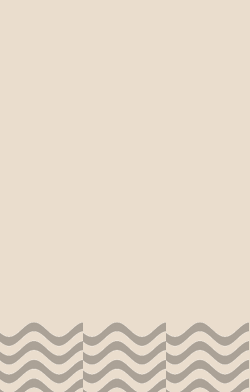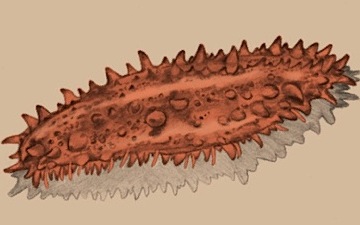Bohadschia argus, the leopard sea cucumber, is a species of marine invertebrate in the familyHolothuriidae. It is the type species of the genus Bohadschia; Jaeger, 1833.
Bohadschia argus is sausage-shaped with a smooth, tough, leathery skin and can grow to 2 feet (0.61 m) in length. It is a greyish-brown colour, paler below, with distinctive dark eye-spots surrounded by white haloes. There are several rows of tube feet on the underside. Surrounding the mouth at the anterior end is a ring of paddle-shaped, black tentacles fringed with white. The anus, at the posterior end, has Cuvierian tubules situated at its base which are readily ejected as sticky threads if the animal is disturbed or handled. These contain toxins which deter predators and are irritating to human skin.[2][3]
Bohadschia argus is found in the Western Indian Ocean and the Pacific Ocean. Its range extends from Madagascar, the Seychelles and Sri Lanka to Malaysia and the South Pacific Islands.[4] It is found on coral reefs and on exposed, sandy areas of the seabed [2] at depths of between 10 feet (3.0 m) and 120 feet (37 m).[5]
Bohadschia argus is an omnivore. As it moves across the seabed, it sweeps sand grains and detritus into its mouth using its sticky tentacles. It obtains some nourishment from the biofilm that coats the grains.[3]
Fish of the species Carapus mourlani are sometimes found living in the coelomic cavity of Bohadschia argus; the fish enter through the anus, either going in head first or more frequently tail first. In a study in the Banda Islands in the South Moluccan Sea, 15 individual fish were found to be inhabiting the body of one sea cucumber 40 centimetres (16 in) in length.[6]
The small emperor shrimp (Periclimenes imperator) is often associated with Bohadschia argus and may help keep it clear of ectoparasites.
A new triterpene glycoside, Arguside A, has been extracted from the tissues of Bohadschia argus. This compound appears to exhibitcytotoxicity against several different types of human tumour cells.[7]
(From Wikipedia, May 31st, 2012)




